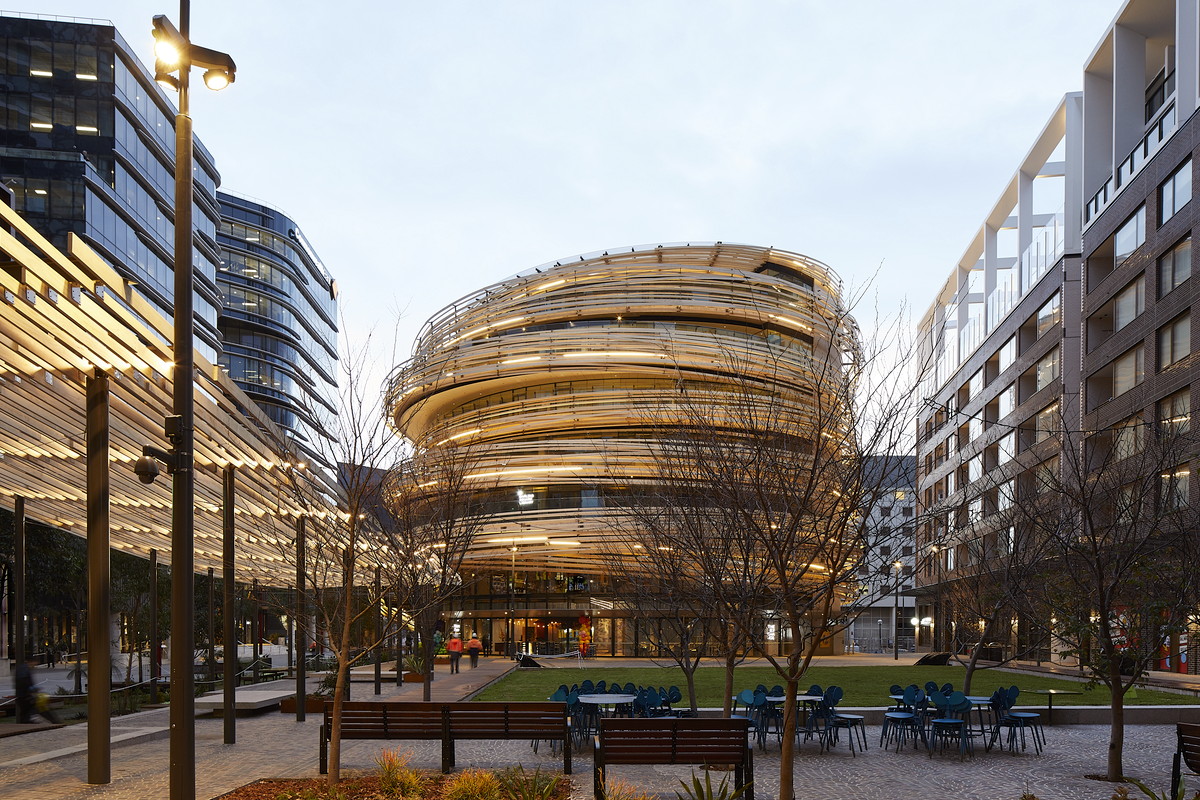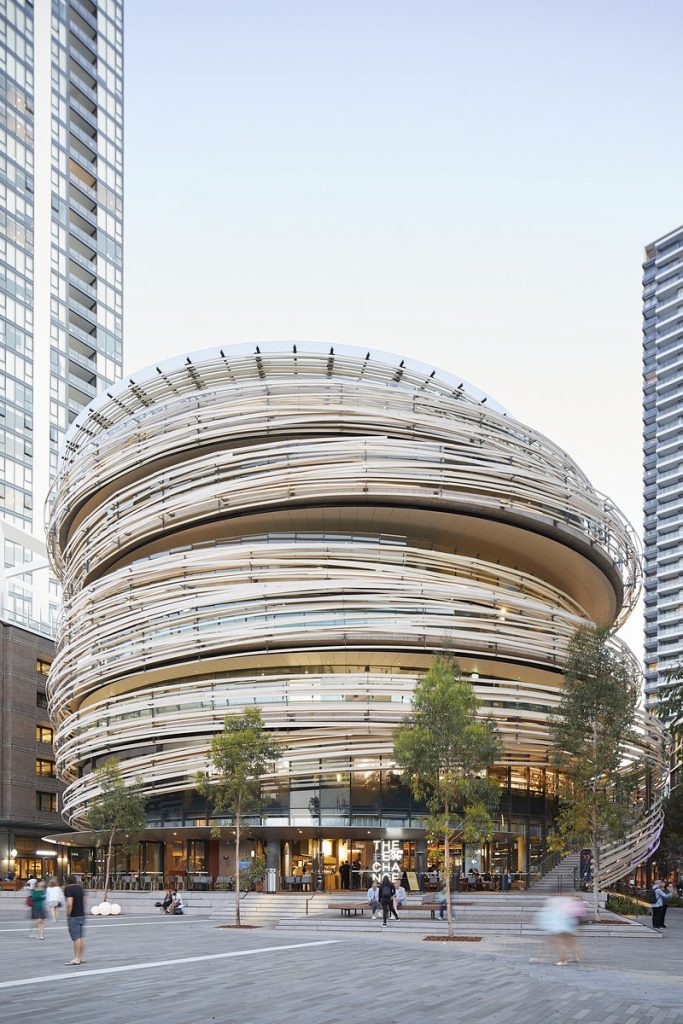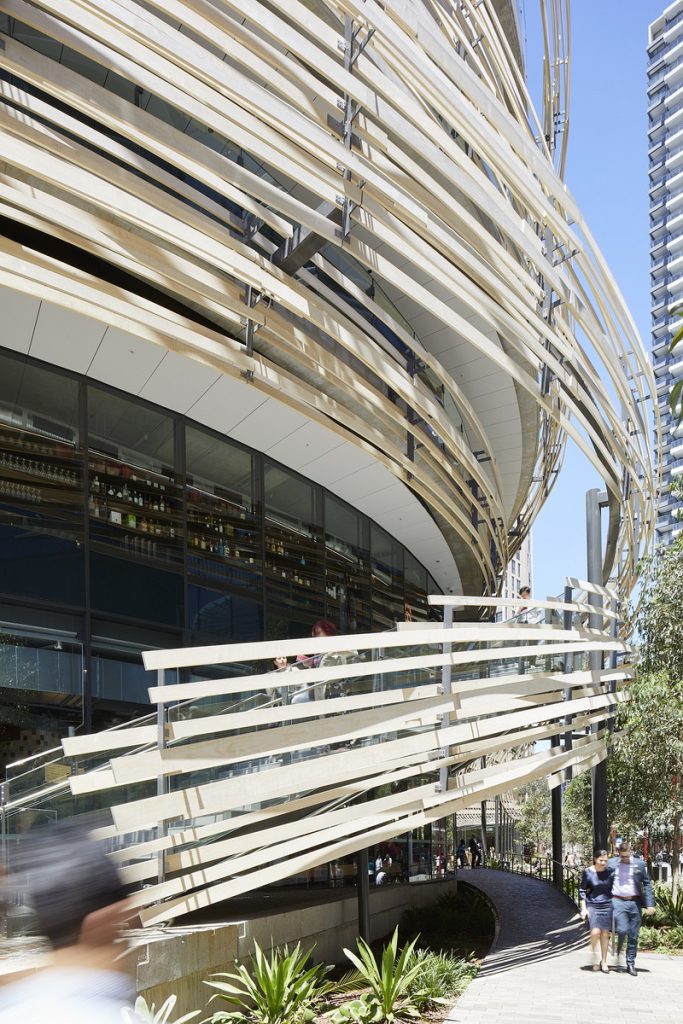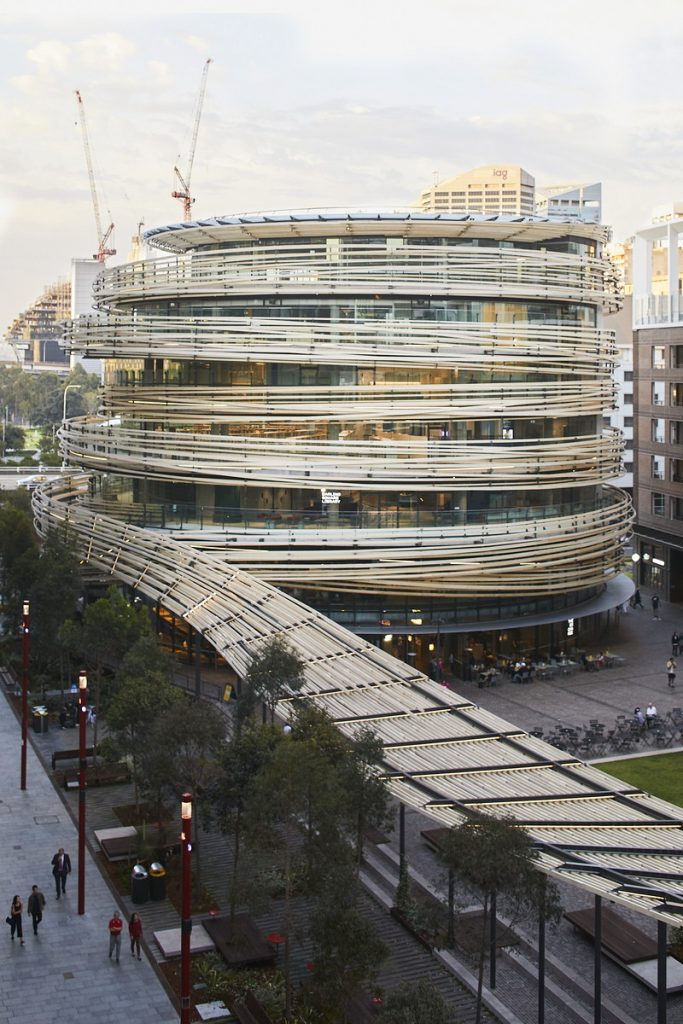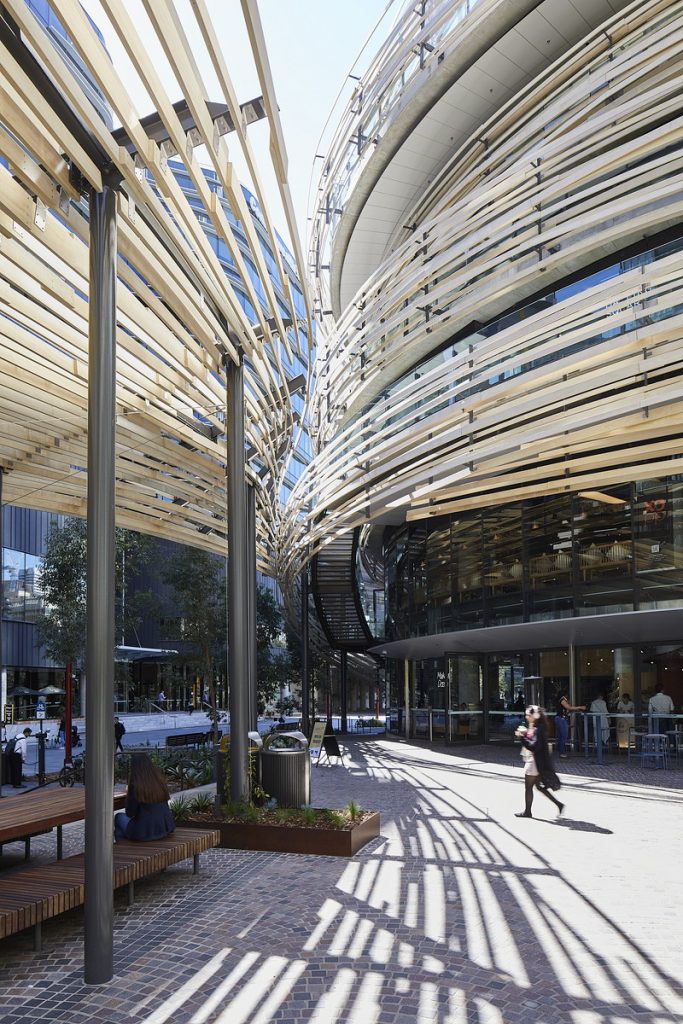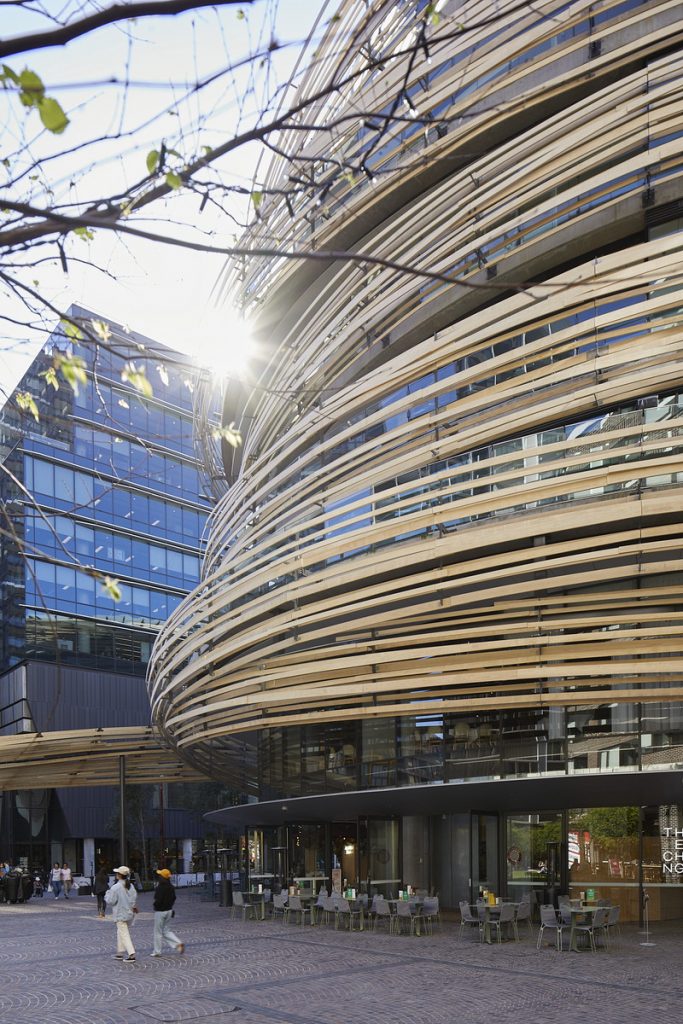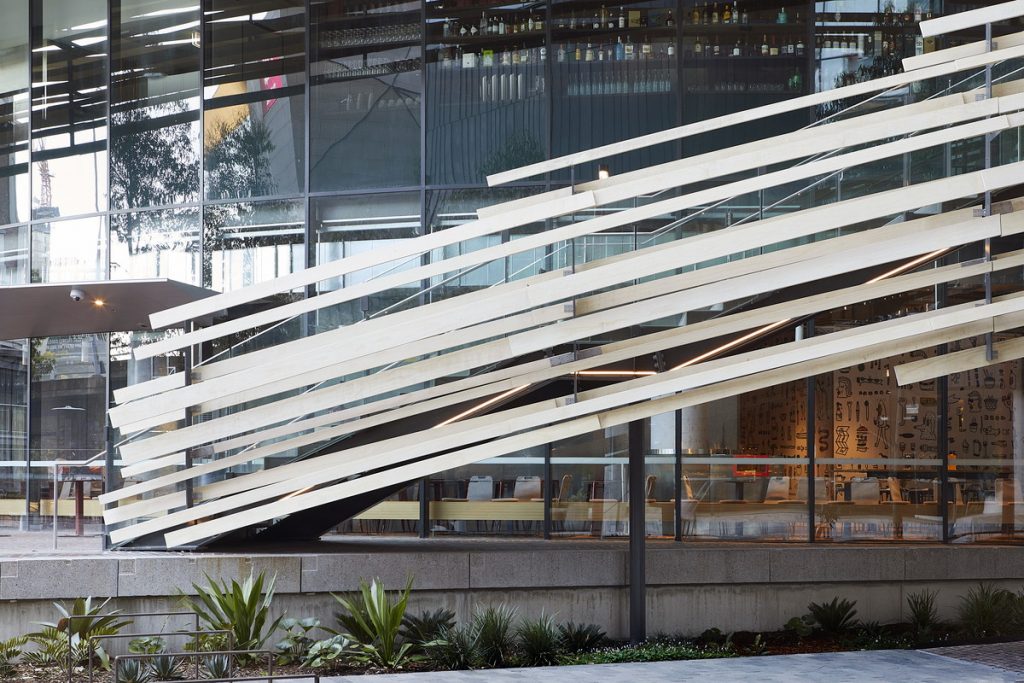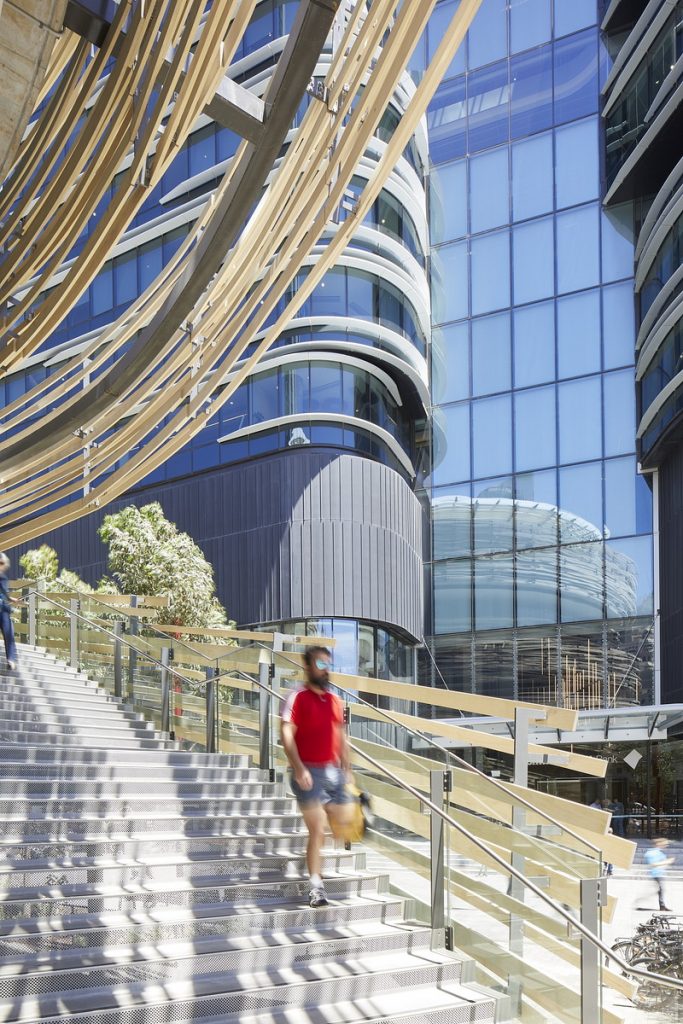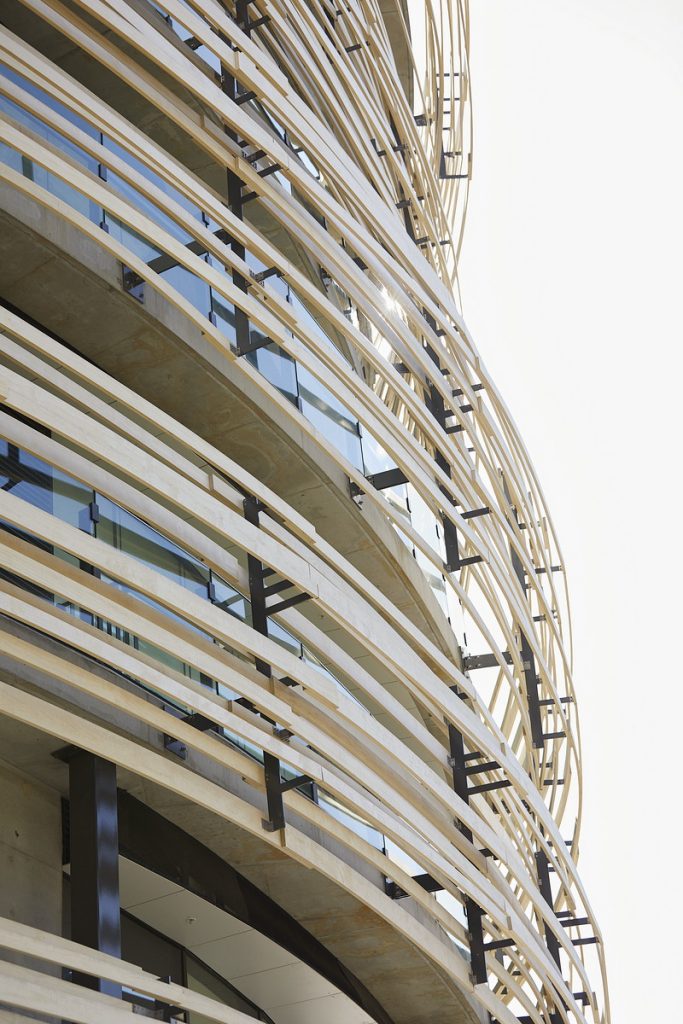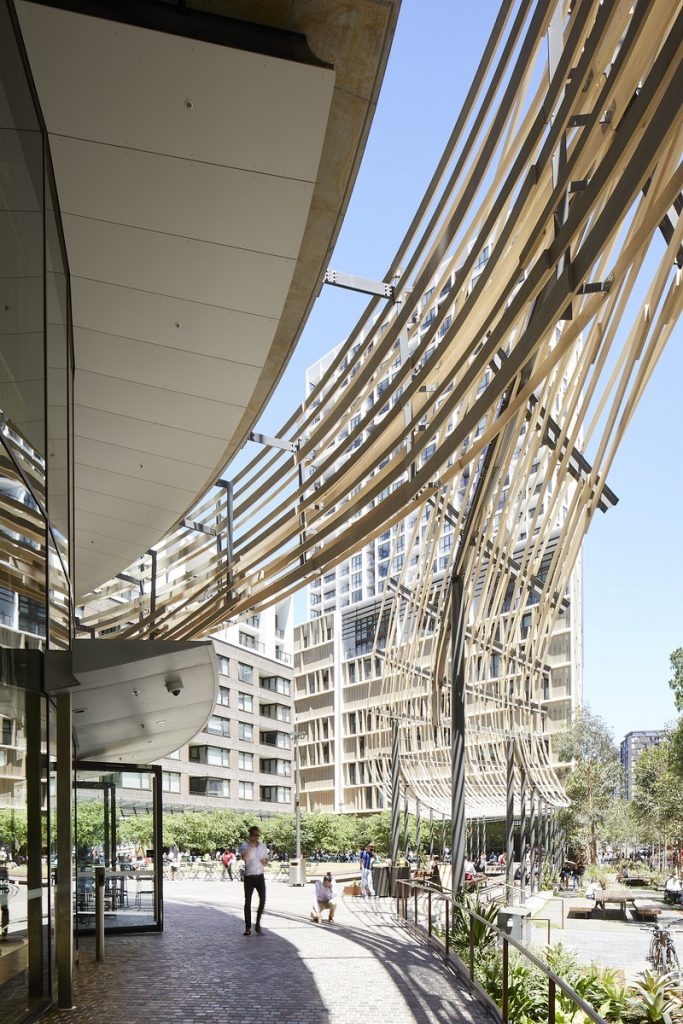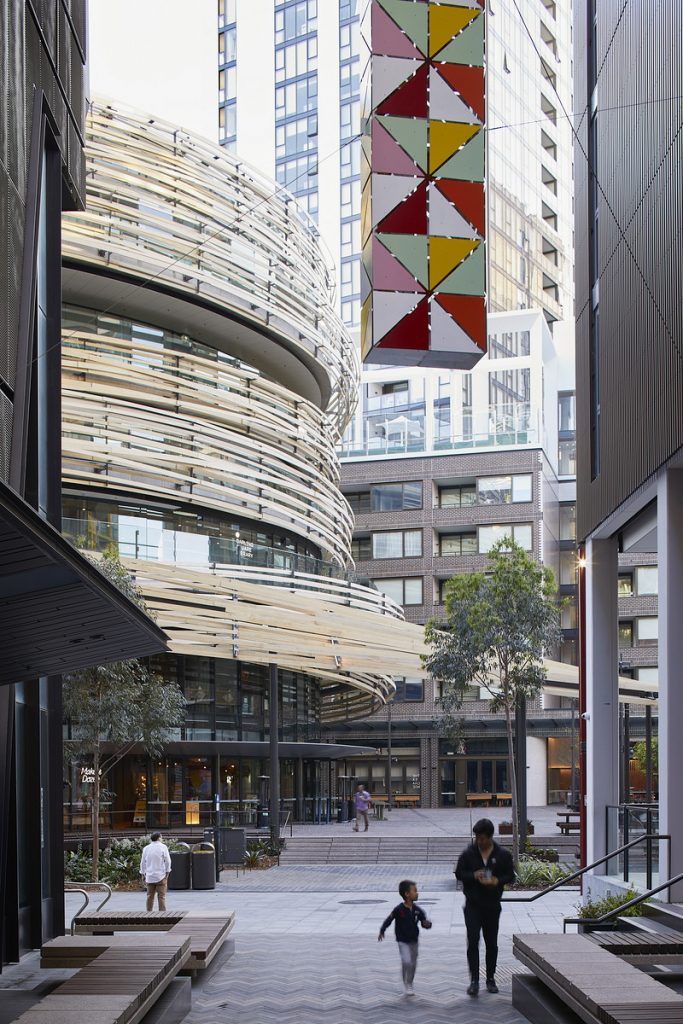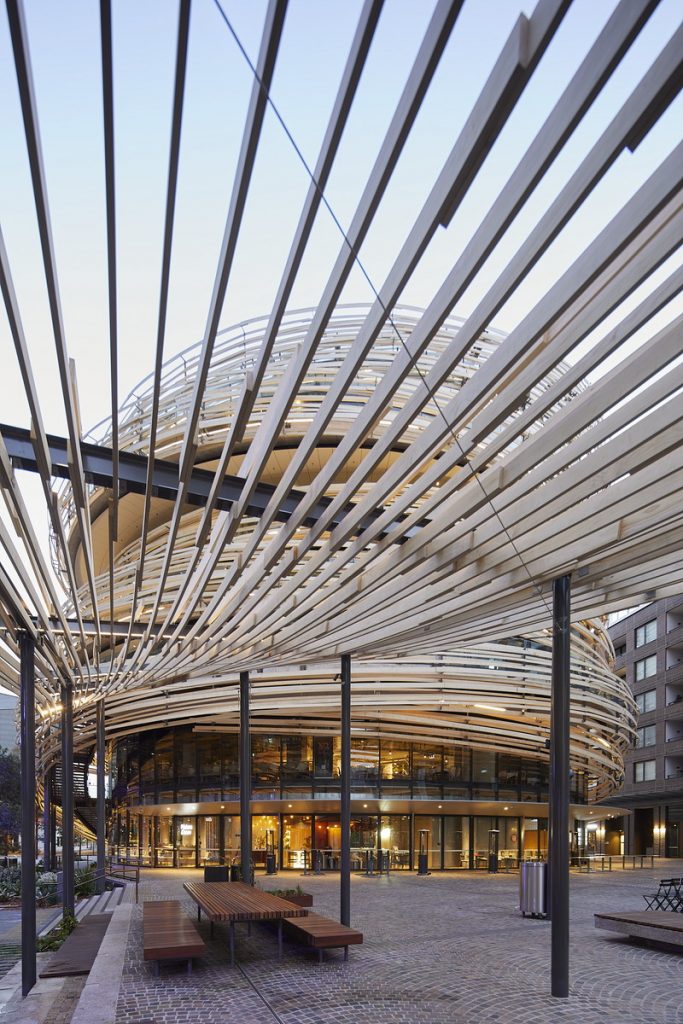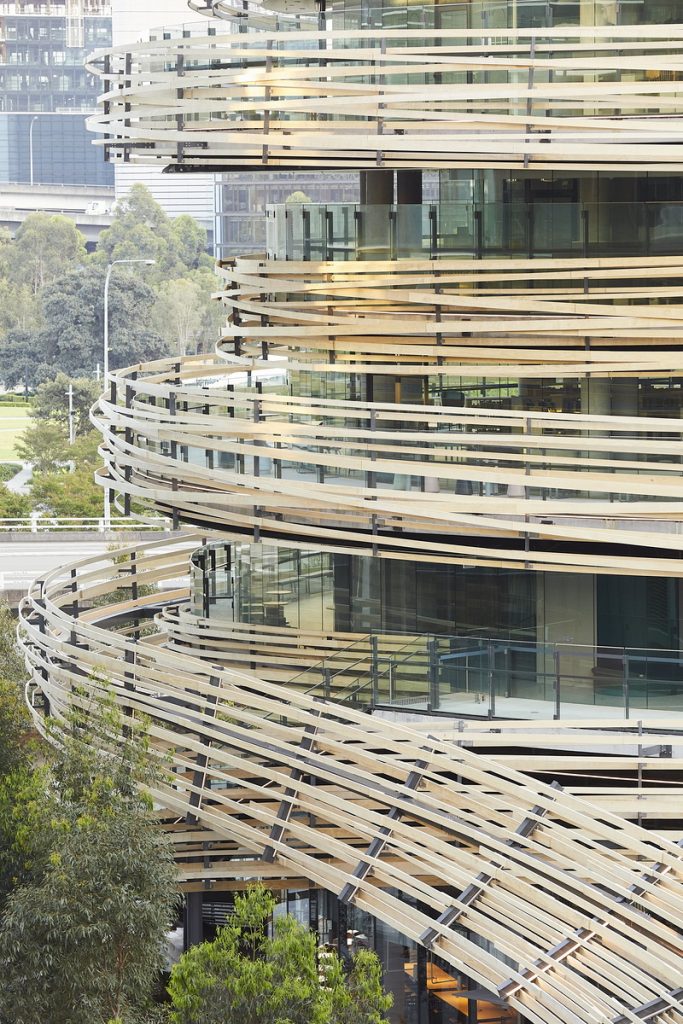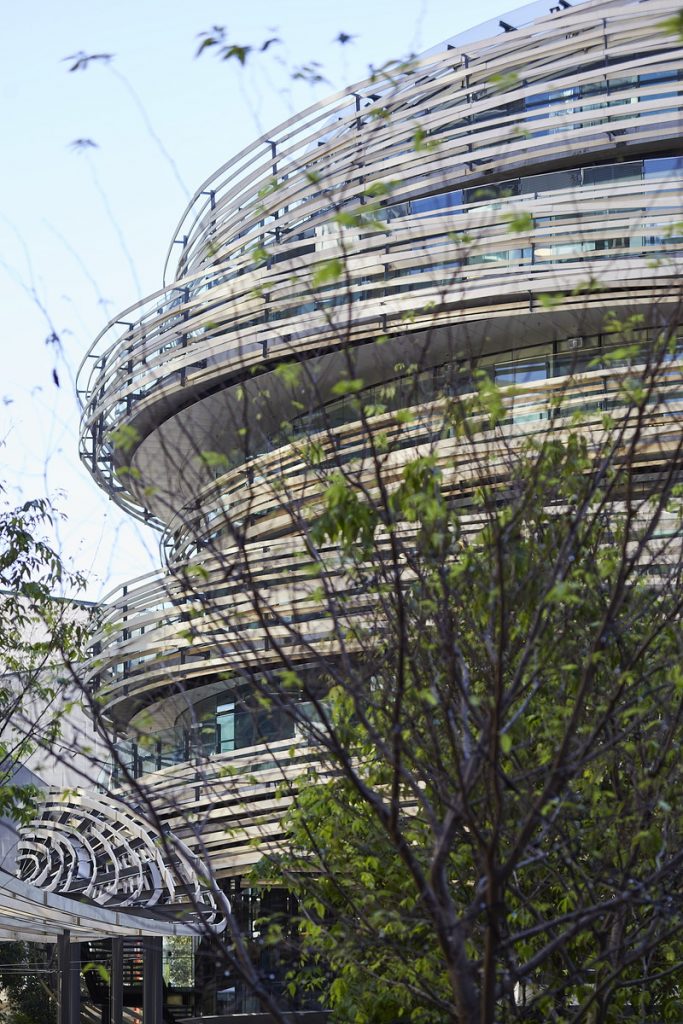A Timber Wrap by Kuma
Japanese architect Kengo Kuma wraps The Exchange building in Sydney with an organic and sculptural timber screen around its shifting floor plates.
When Kengo Kuma first revealed plans for The Exchange in 2016 as the focal point of Darling Square, a neighborhood located on western outskirts of the Sydney central business district in Darling Harbour, Sydney, he said that the building was designed as a landmark that would be recognizable from all angles.
“Our aim is to achieve an architecture that is as open and tangible as possible to the community, and this is reflected in the circular geometry that creates a building that is accessible and recognizable from multiple directions,” said Kuma.
Wrapped in a sculptural timber screen, The Exchange by Kengo Kuma & Associates offers a dynamic and formal public space to the urban context of Sydney, Australia. The Exchange serves as a multi-use civic building comprised of a public library, childcare, and commercial uses; including a fresh food market and restaurants. It is planned as a part of the large urban development in the active area of Darling Harbor.
“The wooden screen wraps the exterior of the building in a dynamic and exciting manner, a historical reference to Darling Harbour originally being a hive of business activity and a focal point as a market exchange.”
The site within the development is like a small pocket among high rise buildings and is characterized by rigid geometry and hard surfaces. The urban design strategy for The Exchange is to create an architectural form in harmony with the square which can merge with the landscape and preserve a human scale using natural materials to produce a tangible and comfortable building.
“Surrounded by residential blocks, retail at the lower levels, and an active flow of people along the boulevard, the site is a nodal point. We, therefore, chose a non-directional architectural form so that it would be accessible and recognizable from all directions. The circular form reflects and promotes the vibrant and active neighborhood of the Darling Square Precinct with its diverse mix of users.”
The ground floor plane is conceived as an extension of the Square. A fully glazed façade enables the space to be open and it promotes interaction with the active street life and free flow of people offering opportunities for the community’s daily use. The middle levels of the building are dedicated to public use. To express the active and diverse nature of the building, a dynamic geometry was created through a shifting of floor plates. By shifting floor plates, comfortable and active outdoor terraces are created at each level that suits the use for its function.
Timber was selected for the building envelope in order to offer natural texture to the neighbors. An organic and spontaneous timber screen wraps around the shifting floor plates. The timber strips filter the natural light and provide a soft texture to the interior space.
“It is our intent to express architecture as a part of natural elements, like a tree or a “nest” in a playful and primitive manner,” says Kuma, who founded Kengo Kuma and Associates in 1990. His studio, which has offices in Tokyo and Paris, is known for his playful use of natural materials on facades and interiors.
Location: Sydney, Australia
Program: Market Hall, Public Library, Child Care, F&B
Design Period: 01/2015 – 08/2017
Construction Period: 08/2017 – 09/2019
Client & Developer: Lendlease
Architect: Kengo Kuma & Associates, Kengo Kuma, Yuki Ikeguchi (Partner in Charge), Marc Moukarzel (Project Architect), Diego Martin, Mira Yung, Laura Sandoval Illera, Taylor Park
Landscape Architect: ASPECT Studios
Structural Engineer: Lendlease
Façade Engineer: ARUP, F&D Normoyle
Façade Optimization: ARMA
MEP: Lendlease
Builder: Lendlease
Structural System: Concrete Structure, Timber Façade
Site Area: 4,993 m²
Building Footprint: 1,075 m²
Total Floor Area: 6,680 m²
Number of Floors: 7

